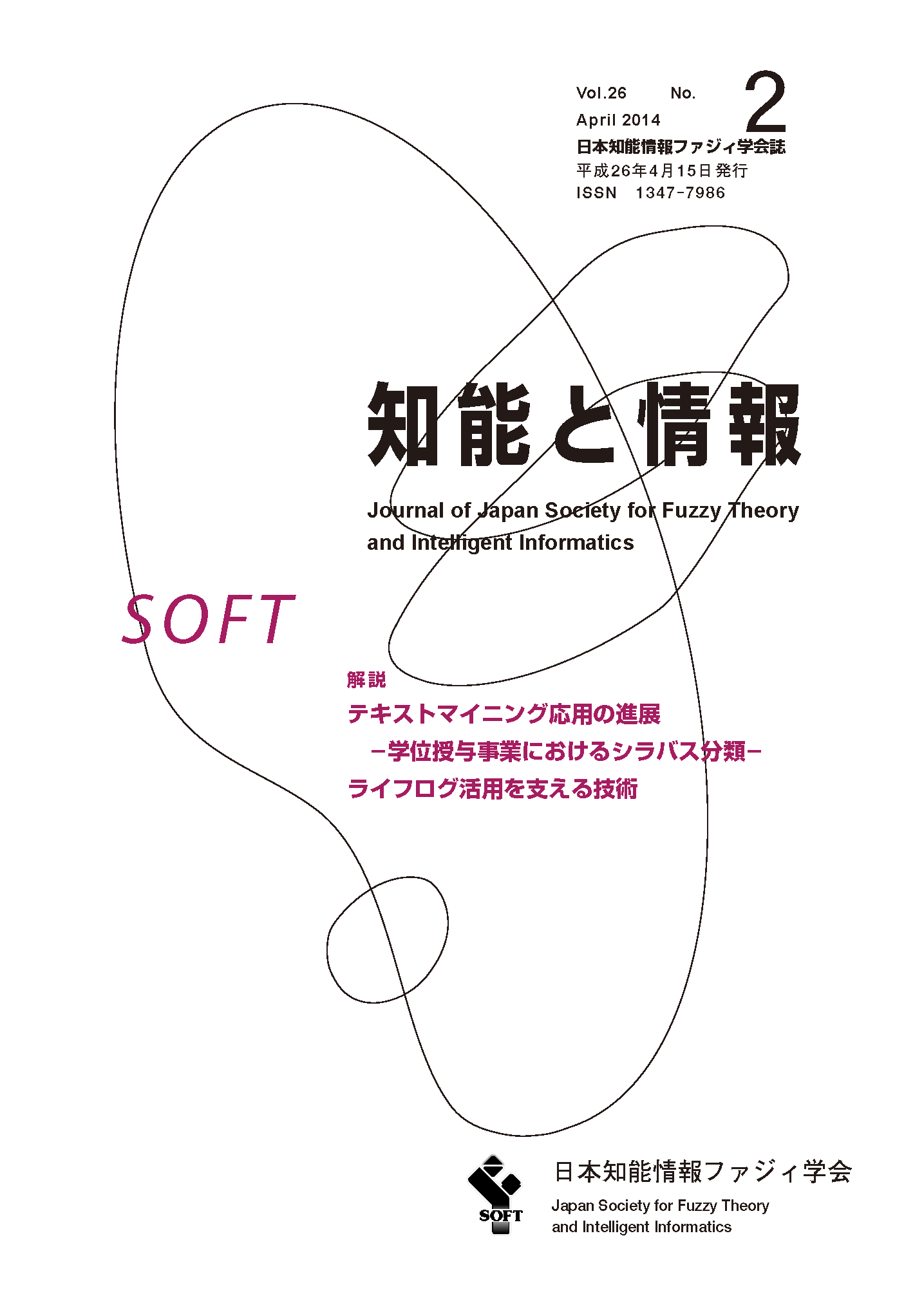Volume 26, Issue 2
Displaying 1-25 of 25 articles from this issue
- |<
- <
- 1
- >
- >|
-
2014Volume 26Issue 2 Pages toc-
Published: April 15, 2014
Released on J-STAGE: November 18, 2017
Download PDF (80K)
-
2014Volume 26Issue 2 Pages 41
Published: April 15, 2014
Released on J-STAGE: November 18, 2017
Download PDF (153K)
-
2014Volume 26Issue 2 Pages 42-50
Published: April 15, 2014
Released on J-STAGE: November 18, 2017
Download PDF (650K) -
2014Volume 26Issue 2 Pages 51-56
Published: April 15, 2014
Released on J-STAGE: November 18, 2017
Download PDF (3784K)
-
2014Volume 26Issue 2 Pages 57-58
Published: April 15, 2014
Released on J-STAGE: November 18, 2017
Download PDF (229K)
-
2014Volume 26Issue 2 Pages 59-60
Published: April 15, 2014
Released on J-STAGE: November 18, 2017
Download PDF (171K)
-
2014Volume 26Issue 2 Pages 61-62
Published: April 15, 2014
Released on J-STAGE: November 18, 2017
Download PDF (485K) -
2014Volume 26Issue 2 Pages 63-64
Published: April 15, 2014
Released on J-STAGE: November 18, 2017
Download PDF (719K) -
2014Volume 26Issue 2 Pages 65-66
Published: April 15, 2014
Released on J-STAGE: November 18, 2017
Download PDF (419K)
-
2014Volume 26Issue 2 Pages 67
Published: April 15, 2014
Released on J-STAGE: November 18, 2017
Download PDF (123K)
-
2014Volume 26Issue 2 Pages 68
Published: April 15, 2014
Released on J-STAGE: November 18, 2017
Download PDF (138K) -
2014Volume 26Issue 2 Pages 68
Published: April 15, 2014
Released on J-STAGE: November 18, 2017
Download PDF (138K)
-
2014Volume 26Issue 2 Pages 69-74
Published: April 15, 2014
Released on J-STAGE: November 18, 2017
Download PDF (227K)
-
2014Volume 26Issue 2 Pages 75
Published: April 15, 2014
Released on J-STAGE: November 18, 2017
Download PDF (149K)
-
2014Volume 26Issue 2 Pages 76-80
Published: April 15, 2014
Released on J-STAGE: November 18, 2017
Download PDF (239K)
-
2014Volume 26Issue 2 Pages 81
Published: April 15, 2014
Released on J-STAGE: November 18, 2017
Download PDF (41K)
-
2014Volume 26Issue 2 Pages 82
Published: April 15, 2014
Released on J-STAGE: November 18, 2017
Download PDF (109K)
Special Issue: Welfer and Intelligent Systems Technology
Original Papers
-
2014Volume 26Issue 2 Pages 559-572
Published: April 15, 2014
Released on J-STAGE: May 29, 2014
Download PDF (529K) -
2014Volume 26Issue 2 Pages 573-580
Published: April 15, 2014
Released on J-STAGE: May 29, 2014
Download PDF (1203K) -
2014Volume 26Issue 2 Pages 581-592
Published: April 15, 2014
Released on J-STAGE: May 29, 2014
Download PDF (854K) -
2014Volume 26Issue 2 Pages 593-605
Published: April 15, 2014
Released on J-STAGE: May 29, 2014
Download PDF (1020K) -
2014Volume 26Issue 2 Pages 606-616
Published: April 15, 2014
Released on J-STAGE: May 29, 2014
Download PDF (1323K)
Regular
Original Papers
-
2014Volume 26Issue 2 Pages 617-626
Published: April 15, 2014
Released on J-STAGE: May 29, 2014
Download PDF (1183K) -
2014Volume 26Issue 2 Pages 627-636
Published: April 15, 2014
Released on J-STAGE: May 29, 2014
Download PDF (657K) -
2014Volume 26Issue 2 Pages 637-646
Published: April 15, 2014
Released on J-STAGE: May 29, 2014
Download PDF (810K)
- |<
- <
- 1
- >
- >|
